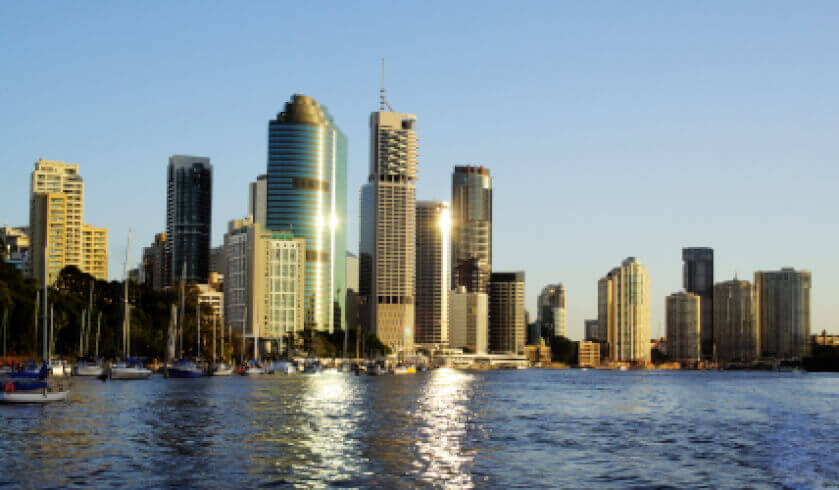Brisbane performs better than other capital cities, says economist
As most capital city property markets follow a downward trend, Queensland’s capital Brisbane continues to thrive through its strong local economy. Find out how Australia’s capital cities are faring in today’s investment game.

Brisbane
My Housing Market’s Dr Andrew Wilson said that Brisbane might just be the best-performing capital city nowadays, following the descent of Sydney and Melbourne from an unprecedented property boom.
Brisbane’s vacancy rates at the moment, which sits at 2.1 per cent for both houses and units, is a sharp decline from the past year. In fact, the capital city’s vacancy rates are well below Sydney’s rates at the moment.
“Overall, it has a strong local economy with a lifestyle and affordability advantage,” Dr Wilson said.
Moreover, south-east Queensland has also benefited from the strong migration coming from the eastern side, particularly New South Wales.
“Brisbane will continue to be at the top of the pack in terms of growth prospects, even though we're only talking a rise of about one to two per cent because we don't have the low interest rate driver and incomes remain flat.
“But there's no doubt that the Brisbane market is pushing ahead with more demand than supply.”
Sydney and Melbourne
While Sydney and Melbourne have been consistently declining over the past months following the end of the property boom, Dr Wilson said that several underlying positive growth drivers remain in both capital cities.
After all, they are still among the strongest local economies across Australia, witnessing strong supply-and-demand dynamics and consistent migration through the years.
“Sydney has the strongest economy in the country, with 80,000 extra jobs over the past year and a surge in the number of first-time buyers. It's always great to see people realising the great Australian dream, particularly in a market with such high barriers due to high prices.”
“Melbourne has even stronger demand drivers than Sydney in terms of migration and the number of first time buyers. Overall, demand will eventually push ahead of supply once again in these markets,” according to Dr Wilson.
The high property prices in both Sydney and Melbourne remains as one of the biggest hurdles to the property markets’ total recovery.
At the moment, the capital cities are witnessing a ‘crisis of confidence’ as the current market cycle approaches its end.
Dr Wilson strongly encouraged investors to avoid getting thoroughly affected by the doom-and-gloom headlines that predict a cataclysmic fall in the property markets of Sydney and Melbourne. At the end of the day, the downward trend seen in these markets are all part of a normal market cycle.
“We're almost seeing an end before our eyes, with the withering of the spring selling season, the holiday break and the elections coming up. I think that the markets will have a year to run before it settles.”
Hobart
While Sydney and Melbourne were coming off a property boom, Hobart saw good growth over the past couple of years.
According to Dr Wilson, among the key drivers of growth in Tasmania’s capital city were the change in government and increased population through net migration.
“Tasmania’s a little late to the party but there’s a bit of catch up there from the market.”
Moreover, the affordability across the capital city has allowed more investors and homebuyers to enter the market and consume the dwelling supply.
“The median price there was ridiculously low compared to other capital cities—below 400,000. The Hobart rental market basically doesn't have anything available to rent as we speak and rents have gone through the roof as a response,” Dr Wilson said.
Perth
The property market in Western Australia’s capital city, meanwhile, has bottomed out, Dr Wilson said. Still, it may experience some positive growth before going flat.
Vacancy rates and rental rates in Perth are trending downwards, which is a positive indicator for the health of the rental market.
“The direction is certainly positive for the rental market, which is always a good indicator of what's happening in the broader market,” the chief economist highlighted.
Moving forward, Perth is going to be a flat market for a while until it sees a turnaround in migration levels, as well as the improvement of other growth drivers such as jobs growth and infrastructure.
However, investors must not expect a significant ‘catch up’ from the capital city, according to Dr Wilson. At best, property prices across Perth will remain relatively subdued compared to other capital cities.
Adelaide and Darwin
South Australia’s capital city market is ‘steady as she goes’ owing to the conservative investment mindset across most parts of the state, according to Dr Wilson.
Migration stands as the best growth driver in the capital city, keeping the local economy from tumbling over.
“Adelaide is among the top performers of all the capitals in terms of migration, I believe, but only by a one to two per cent difference,” according to Dr Wilson.
Meanwhile, Darwin faces the issue of oversupply in the unit market following a record growth period for apartment development, which proves to be a difficult problem to solve as the capital of Northern Territory is among the smallest property markets in Australia.
Despite this challenge, the local economy remains strong, and it is expected to continue thriving through population growth and industry growth.
“The key aspect there is to get more people into Darwin to soak up those apartments.”
“Mining, agriculture and tourism will continue to be the strength of the Darwin market, which it needs to avoid ticking over and ultimately rebalance,” Dr Wilson concluded.
Tune in to Dr Andrew Wilson's episode on The Smart Property Investment Show to know more about the opportunities available for property investors across Australia's capital cities.
